Welcome to the wonderful world of shapes! Shapes are all around us, from the wheels on a car to the buttons on your shirt. Understanding shapes is one of the first steps in learning math, and it’s also a lot of fun! In this blog, we’ll explore why teaching shapes is so important, discover different types of shapes, and learn how to teach kids about shapes using games and activities.
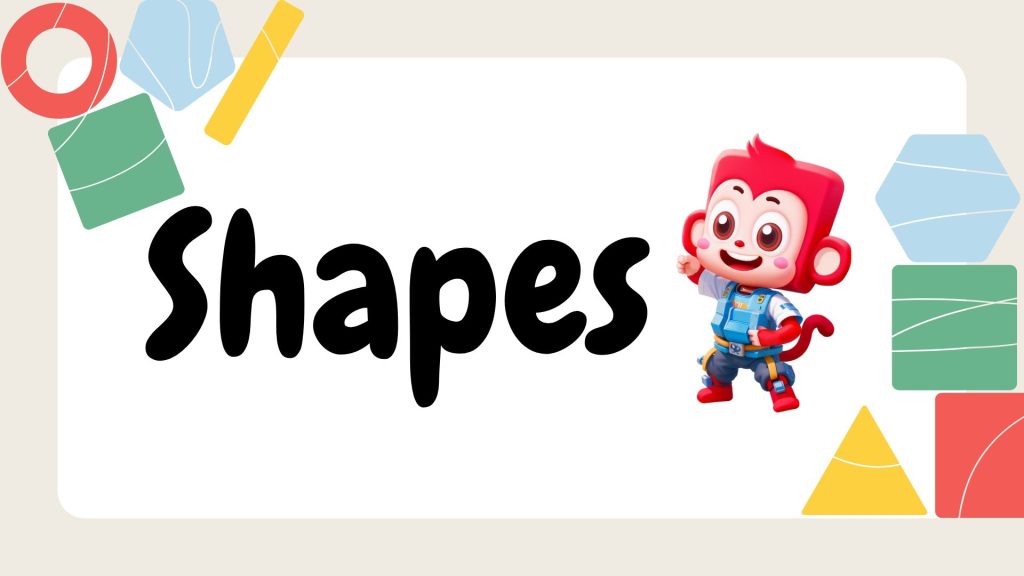
Why is Teaching Shapes So Important?
Children have dynamic learning capabilities that are greatly enhanced by their observation skills. However, when it comes to teaching preschool kids, parents need to take small, manageable steps. Basic shapes and colors play a crucial role in a child’s development. Kids naturally try to understand their surroundings by observing the different objects around them. Learning about them helps children in many ways:
- Foundation for Math Skills: Recognizing and understanding shapes is a basic skill that leads to more complex math concepts like geometry.
- Language Development: Talking about shapes helps children expand their vocabulary with words like “circle,” “square,” “triangle,” and more.
- Problem-Solving Skills: Identifying shapes helps children develop critical thinking and problem-solving skills.
- Spatial Awareness: Understanding shapes helps kids navigate the world around them by recognizing patterns and structures.
What are the Different Types of Shapes?
Here are some basic shapes that every primary school student should know:
Circle
- Description: A round shape with no corners or edges.
- Examples: Wheels, clocks, coins.
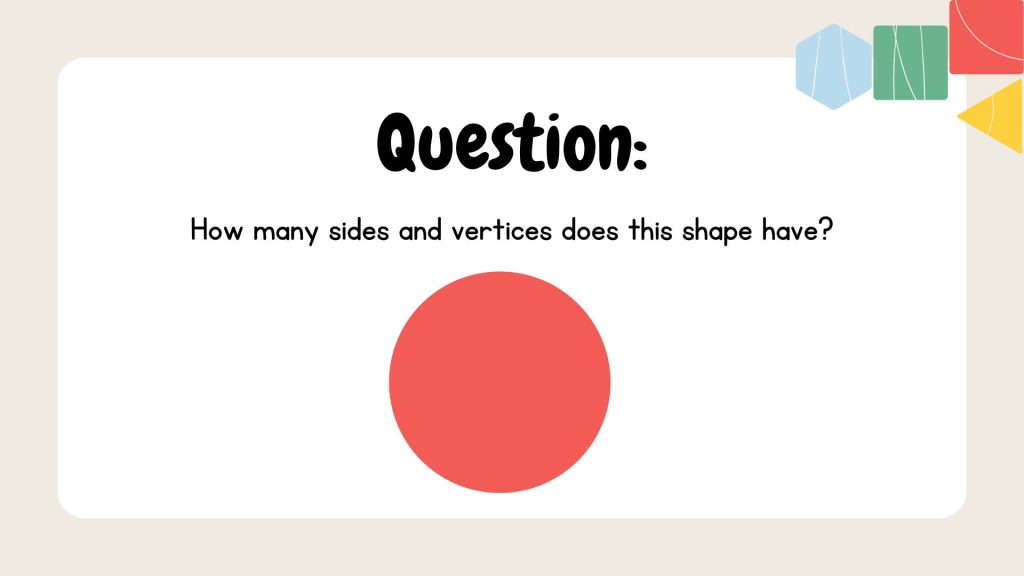
Square
- Description: A shape with four equal sides and four right angles.
- Examples: Windows, tiles, chessboards.
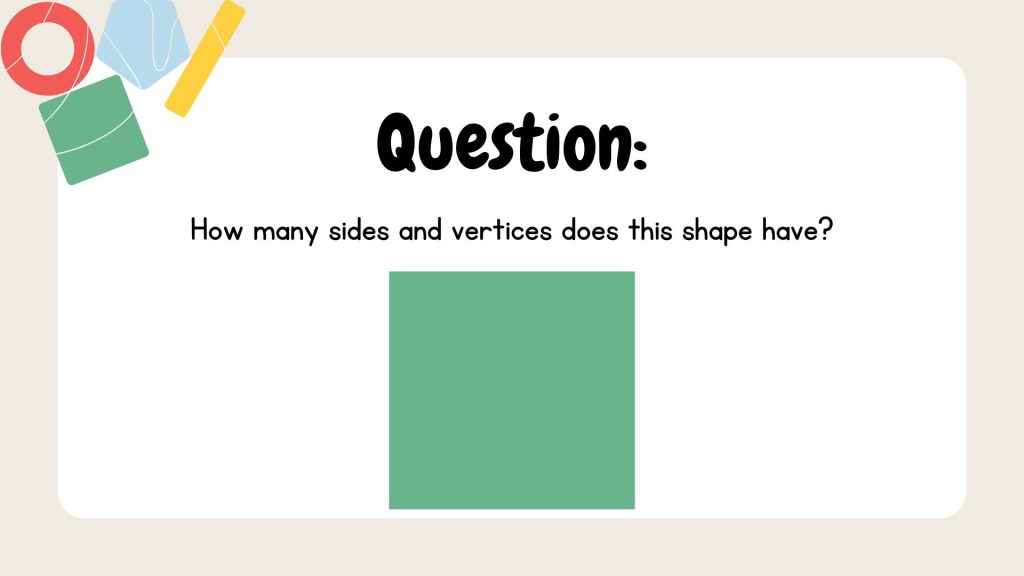
Triangle
- Description: A shape with three sides and three angles.
- Examples: Pyramids, slices of pizza, road signs.

Rectangle
- Description: A shape with four sides where opposite sides are equal in length and four right angles.
- Examples: Doors, books, smartphones.

Oval
- Description: A stretched-out circle, longer in one direction.
- Examples: Eggs, balloons, mirrors.
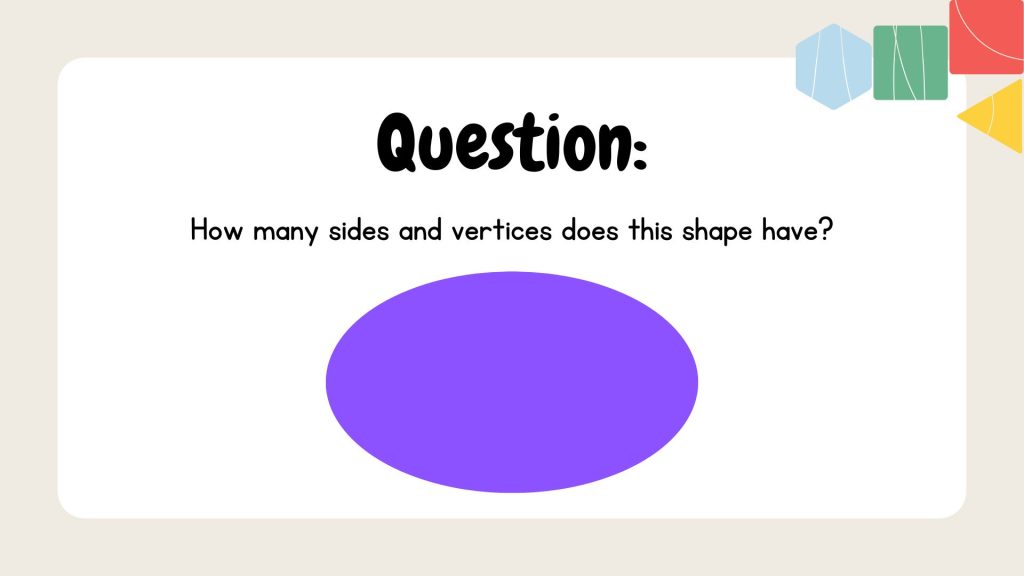
Hexagon
- Description: A shape with six sides and six angles.
- Examples: Honeycombs, nuts (hardware), tiles.
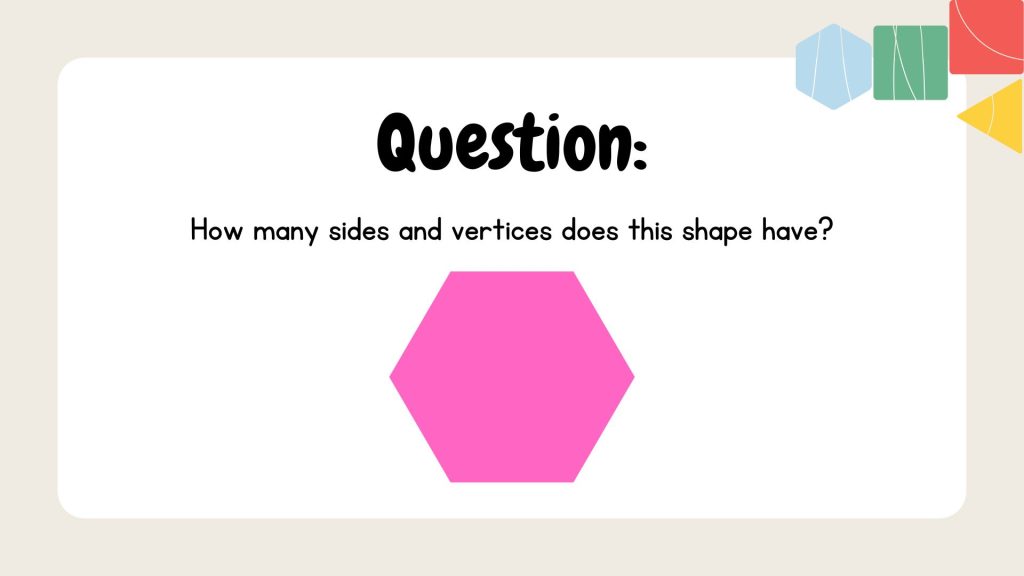
How to Teach Kids with the Help of Games and Activities
Everyday objects and structures can help children learn about shapes. As a parent, it’s important to introduce various shapes to your child at an early age. There are numerous shape-related activities designed for primary school students that can help them learn and understand basic shapes effectively.
Shape Hunt
Take your students on a shape hunt around the classroom or home. Give them a list of shapes to find (e.g., circle, square) and let them explore. This activity encourages observation skills and makes learning interactive.
Shape Sorting
Provide a mix of different objects or cut-out paper shapes and ask kids to sort them into groups based on their shape. This helps children recognize similarities and differences between shapes.
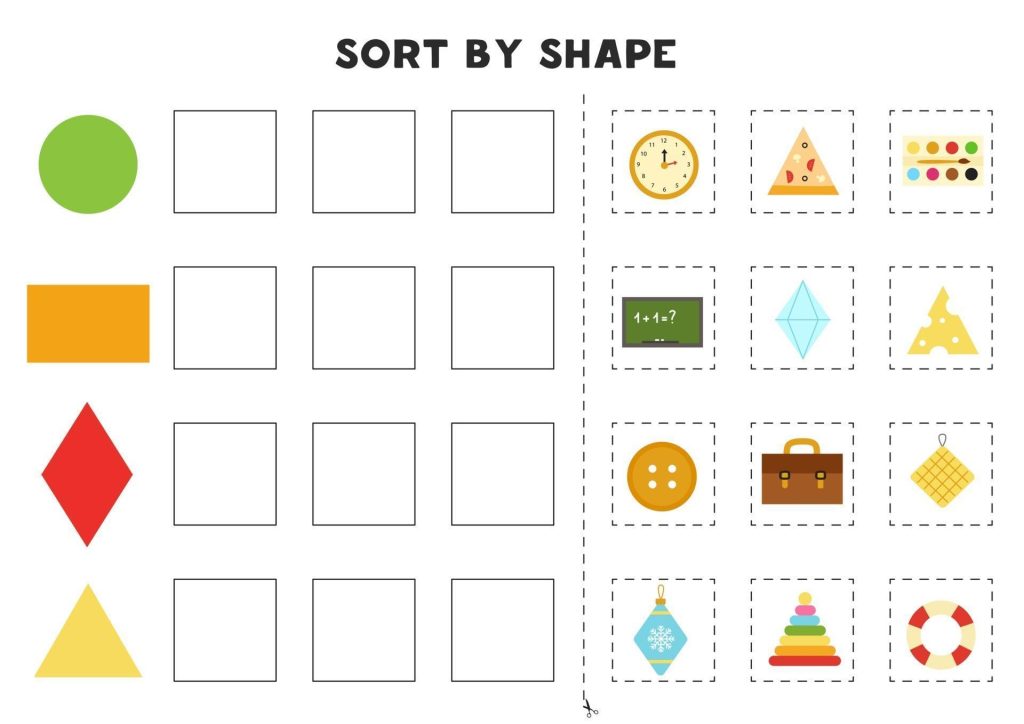
Shape Art
Get creative with art projects! Use colored paper to cut out different shapes and let kids create pictures or patterns. This activity combines art with math skills.
Building Blocks
Using building blocks or LEGO pieces can help children understand three-dimensional shapes like cubes and cylinders while developing fine motor skills.
Shape Songs and Rhymes
Songs and rhymes about shapes make learning memorable. There are many catchy tunes available online that teach kids about different shapes in a fun way.
This catchy tune will help you remember all your favorite shapes like circles, squares, triangles, and more! Learning has never been this much fun. Let’s make those shapes come alive with music and movement!
👉 Click Here to Watch the Song on YouTube! 👈
Conclusion
Teaching primary school students about basic shapes is an essential part of their early education journey. It lays the groundwork for future math skills while also enhancing their language development, problem-solving abilities, and spatial awareness. By incorporating games and activities into lessons about shapes, learning becomes not just educational but also enjoyable!
So next time you see a circle or square around you, remember that you’re looking at something magical—a building block of knowledge that opens up a world of possibilities for young minds!




